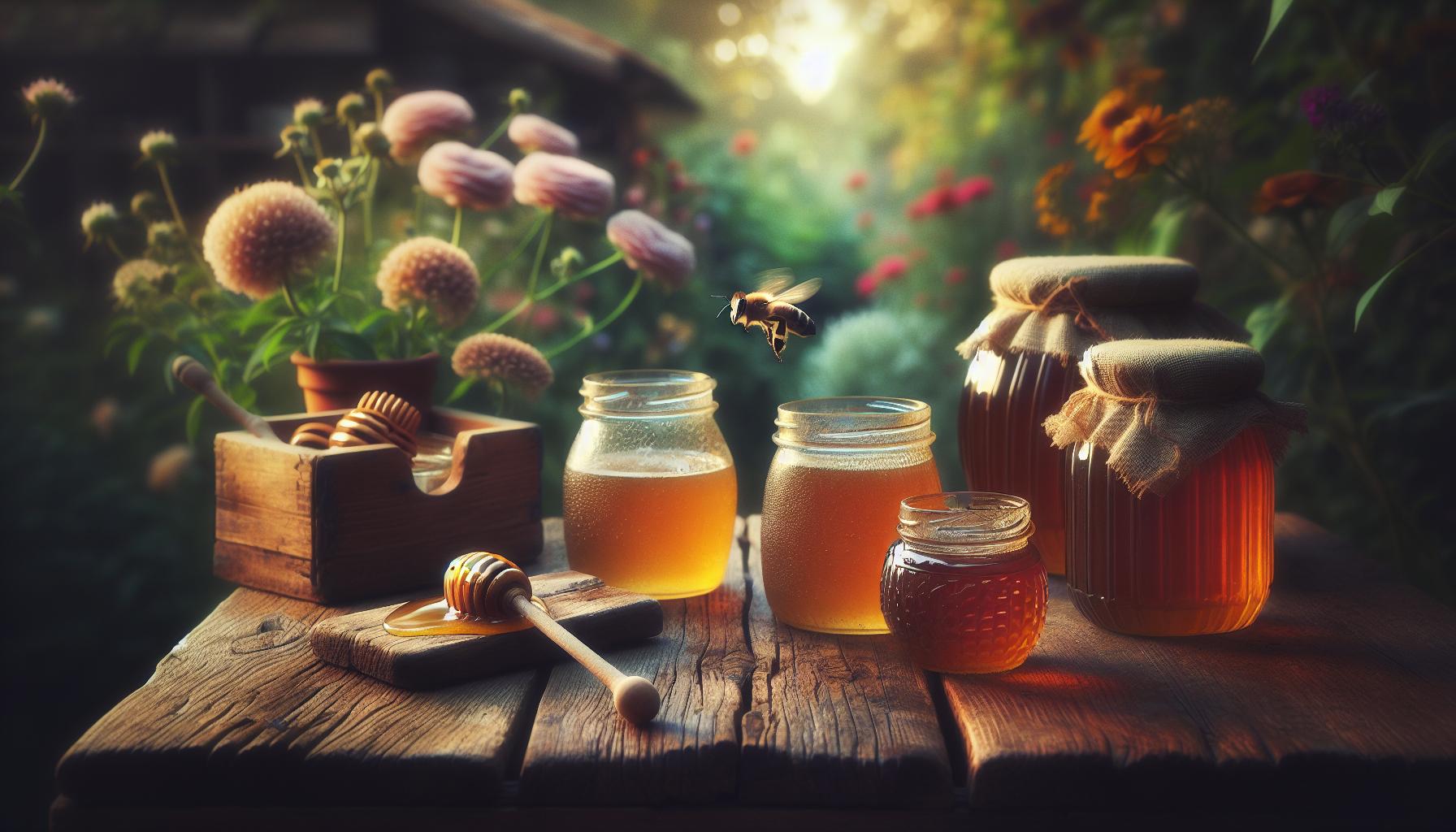Not all honey is created equal, and raw, unfiltered honey stands out as one of nature's purest and most nutrient-rich sweeteners. Unlike processed honey, which often loses nutrients during pasteurization and filtration, raw honey retains its natural enzymes, antioxidants, and beneficial compounds. This golden, unprocessed treasure comes straight from the hive, offering not only rich flavor but also a wide range of health benefits.
For centuries, raw honey has been cherished for its versatility and medicinal properties. Whether it’s drizzled over yogurt, incorporated into skincare routines, or used as a natural remedy, raw honey is a wholesome alternative to refined sugars. Its purity and minimal processing make it a favorite choice for those seeking both nutrition and taste.
What Is Raw and Unfiltered Honey?
Raw and unfiltered honey is honey in its most natural form. It undergoes minimal processing to preserve essential nutrients, enzymes, and antioxidants. Unlike processed honey, raw honey is not heated above 95°F, which helps maintain its nutritional integrity.
This type of honey often contains traces of pollen, beeswax, and micro-particles that enhance its nutritional value and purity. While large debris like bee fragments or comb pieces are removed, finer particles and micronutrients remain intact.
The appearance of raw honey is typically cloudy, and it crystallizes faster than processed honey due to the absence of stabilizers. Its flavor, aroma, and texture vary depending on the flower sources visited by bees, adding to its unique appeal.
Benefits of Raw and Unfiltered Honey
Raw honey offers an array of benefits due to its natural composition and minimal processing. Here’s why it’s considered a superfood:
1. High Nutritional Value
Raw honey contains small amounts of vitamins, minerals, and enzymes. It includes trace nutrients like vitamin C, niacin, magnesium, calcium, and potassium. These natural sugars paired with nutrients make it a healthier energy source than refined sugars.
2. Rich in Antioxidants
Raw honey is a great source of phenolic compounds, which act as antioxidants. These compounds help neutralize free radicals, reducing oxidative stress and supporting heart health. Darker varieties of raw honey tend to have higher antioxidant levels.
3. Natural Healing Properties
Raw honey has antibacterial, anti-inflammatory, and wound-healing properties. It creates a protective barrier on wounds, preventing infection and promoting tissue regeneration. Manuka honey, a popular variety, is even used in medical settings for its potent healing effects. Additionally, raw honey can soothe sore throats and boost immunity.
Raw vs. Processed Honey
Processing Differences
- Raw Honey: Undergoes minimal processing, preserving enzymes, pollen, and nutrients.
- Processed Honey: Often heated, pasteurized, and filtered to remove particles and extend shelf life. These processes strip away beneficial compounds and can diminish nutritional value.
Nutritional Impact
Raw honey retains its vitamins, enzymes, and antioxidants, whereas processed honey loses many of these due to heat exposure. Filtration also removes pollen, which may have immune-boosting properties.
How to Identify Genuine Raw Honey
Spotting authentic raw honey is key to enjoying its benefits. Here’s what to look for:
Labeling and Packaging
- Check for terms like "raw," "unfiltered," or "unpasteurized."
- Avoid vague labels like "pure honey," which may include processed products.
- Raw honey is often packaged in glass jars to preserve freshness, while processed honey is typically found in plastic containers.
Texture and Appearance
- Raw honey is usually thick and cloudy with a creamy or grainy texture, indicating retained pollen and micro-particles.
- Crystallization occurs naturally and is a sign of authenticity. Processed honey remains liquid longer due to added stabilizers.
Ways to Use Raw and Unfiltered Honey
In Cooking and Baking
Raw honey adds flavor and nutrients to dishes. Use it as a glaze for meats, a sweetener for marinades, or a drizzle over roasted vegetables. When baking, it serves as a natural sugar substitute, adding moisture and depth to baked goods. Adjust recipes by reducing liquid content and lowering the baking temperature slightly to prevent over-browning.
As a Natural Sweetener
Raw honey enhances beverages like tea and smoothies without the additives found in artificial sweeteners. It also pairs well with oatmeal, yogurt, or fruit, offering both taste and health benefits.
For Skin and Hair Care
Raw honey’s antibacterial and hydrating properties make it a skincare favorite. Use it as a face mask to cleanse pores and moisturize skin, or mix it with turmeric or yogurt for additional benefits. For hair, raw honey can be added to conditioners to improve shine and reduce dryness.
Potential Drawbacks and Risks
While raw honey has numerous benefits, it’s essential to be aware of potential risks:
Allergies
Raw honey contains pollen, which may trigger allergies in sensitive individuals. Symptoms can include itching, swelling, or respiratory issues. People with pollen or bee allergies should consult a doctor before consuming raw honey.
Infant Safety Concerns
Raw honey is unsafe for infants under 12 months due to the risk of botulism, a rare but serious illness caused by Clostridium botulinum spores.
Conclusion
Raw and unfiltered honey is a natural powerhouse of nutrients, flavor, and health benefits. Whether used as a sweetener, a cooking ingredient, or a skincare remedy, its versatility is unmatched. By choosing raw honey, you’re opting for a wholesome and nutrient-rich alternative that supports a healthier lifestyle.
Frequently Asked Questions
What is raw and unfiltered honey?
Raw and unfiltered honey is minimally processed honey that retains its natural enzymes, nutrients, pollen, and beeswax. It’s not heated above 95°F and is often cloudy due to the lack of filtration.
What are the benefits of raw honey?
Raw honey provides antioxidants, vitamins, and antibacterial properties. It supports immune health, aids wound healing, and offers a natural alternative to refined sugars.
How can I identify genuine raw honey?
Look for labels with terms like "raw" or "unfiltered." Authentic raw honey is often cloudy, crystallizes naturally, and is commonly packaged in glass jars.
Is raw honey safe for everyone?
Raw honey is not suitable for infants under 12 months due to the risk of botulism. People with pollen allergies should consult a doctor before consumption.
Why does raw honey crystallize?
Crystallization occurs naturally when glucose separates from water. This is more common in raw honey due to its higher pollen and micro-particle content.



